Rourea mimosoides (Vahl) Planch.
| Etymology | Genus | Unknown |
|---|---|---|
| Species | Mimosa-like | |
| Family | Connaraceae | |
| Synonyms | Cnestis mimosoides (Vahl) Jack; Connarus mimosoides Vahl | |
| Common Names | Sembelit Merah | |
| Status | Native: Least Concern | |
| Form | Woody climber | |
| Native Distribution | Andaman and Nicobar Islands, Sumatra, Myanmar, Cambodia, Thailand, Vietnam, Peninsular Malaysia, Singa | |
Diagnostics:
A large woody climber of 50m, but can be often seen as saplings along the forest trails. It can be differentiated from other congeners from the shape of the glabrous leaflets, with up to 51 pairs for each leaf (Keng, 1990). The tips of the leaflets are notched, with each of the two apex rounded. The base of the leaflets are slightly cordate and uneven in shape.
Interesting Facts:
This climber is used traditionally as a remedy to treat cold in children, bloody diarrhoea as well as used as diuretic agent (Osman et al., 2019). Adenan et al. (2022) also describes the isolation of diisooctyl phthalate (DIOP) from the plant, which was found to inhibit fat cell differentiation and act as a partial agonist of PPARγ, potentially offering a new approach for anti-diabetic therapies.
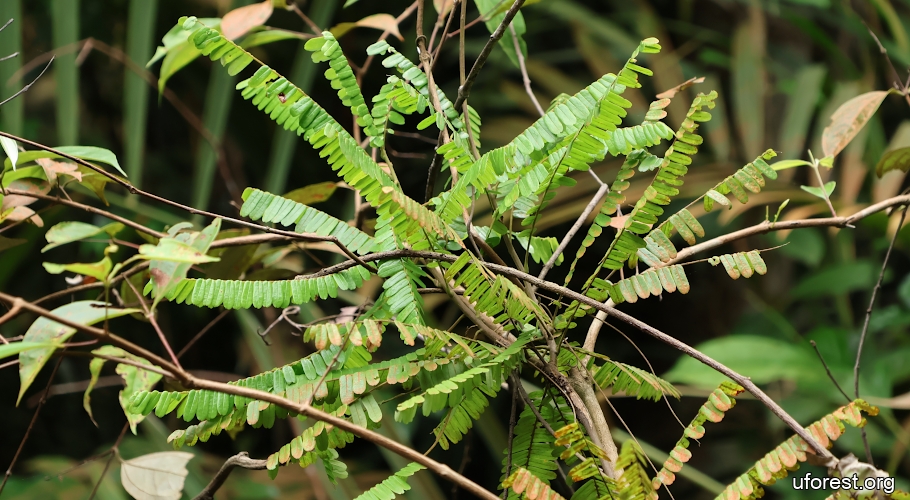
Liana exposed from a tree fall along Lornie Trail (2025).
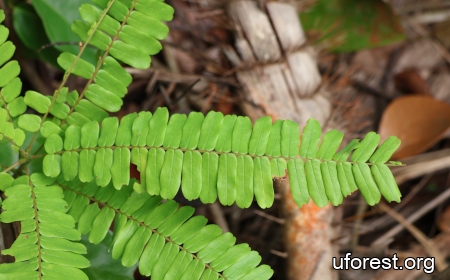
Compound leaf.
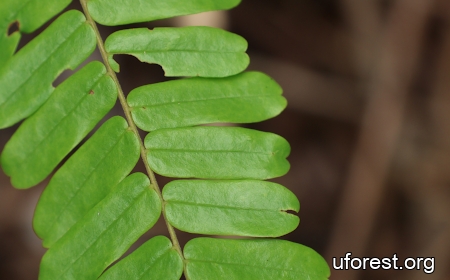
Closeup leaflets, note the notched tips.
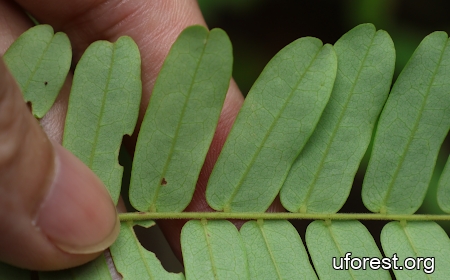
Closeup leaflets underside.
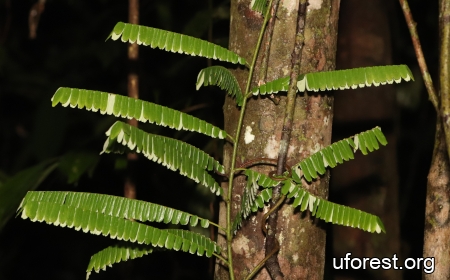
Leaves become flaccid at night.
References
Keng H. (1990) The Concise Flora of Singapore: Gymnosperms and Dicotyledons. Singapore University Press, National University of Singapore, Singapore. 364 pp.
Adenan, M. I., Muhammad, T. S. T., Chung, C. B., Aizuddin, M. A., & Zahari, Z. (2022). Diisooctyl phthalate isolated from Rourea mimosoides: A partial PPARγ agonist potently blocks adipocyte differentiation. Tropical Journal of Natural Product Research, 6(8), 1197–1202.
Osman, C. P., Zahari, Z., Adenan, M. I., & Mohd Zohdi, R. (2019). A review on traditional uses, phytochemistry, and pharmacology of the genus Rourea. Journal of Applied Pharmaceutical Science, 9(9), 125.
Author: Siyang
Posted: 2025-10-21 / Modified: 2025-10-30